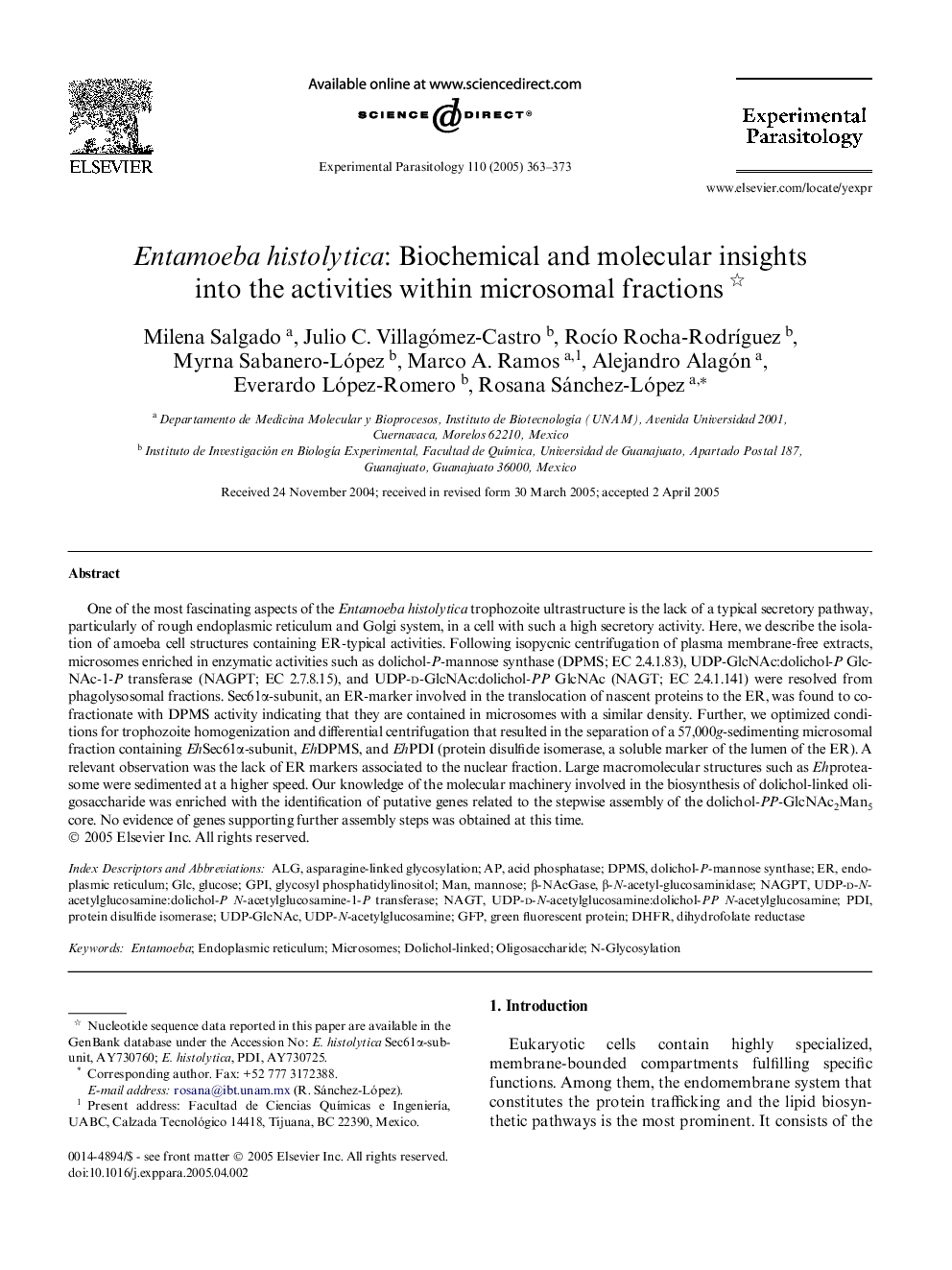| Article ID | Journal | Published Year | Pages | File Type |
|---|---|---|---|---|
| 9442807 | Experimental Parasitology | 2005 | 11 Pages |
Abstract
One of the most fascinating aspects of the Entamoeba histolytica trophozoite ultrastructure is the lack of a typical secretory pathway, particularly of rough endoplasmic reticulum and Golgi system, in a cell with such a high secretory activity. Here, we describe the isolation of amoeba cell structures containing ER-typical activities. Following isopycnic centrifugation of plasma membrane-free extracts, microsomes enriched in enzymatic activities such as dolichol-P-mannose synthase (DPMS; EC 2.4.1.83), UDP-GlcNAc:dolichol-P GlcNAc-1-P transferase (NAGPT; EC 2.7.8.15), and UDP-d-GlcNAc:dolichol-PP GlcNAc (NAGT; EC 2.4.1.141) were resolved from phagolysosomal fractions. Sec61α-subunit, an ER-marker involved in the translocation of nascent proteins to the ER, was found to co-fractionate with DPMS activity indicating that they are contained in microsomes with a similar density. Further, we optimized conditions for trophozoite homogenization and differential centrifugation that resulted in the separation of a 57,000g-sedimenting microsomal fraction containing EhSec61α-subunit, EhDPMS, and EhPDI (protein disulfide isomerase, a soluble marker of the lumen of the ER). A relevant observation was the lack of ER markers associated to the nuclear fraction. Large macromolecular structures such as Ehproteasome were sedimented at a higher speed. Our knowledge of the molecular machinery involved in the biosynthesis of dolichol-linked oligosaccharide was enriched with the identification of putative genes related to the stepwise assembly of the dolichol-PP-GlcNAc2Man5 core. No evidence of genes supporting further assembly steps was obtained at this time.
Keywords
Related Topics
Life Sciences
Immunology and Microbiology
Parasitology
Authors
Milena Salgado, Julio C. Villagómez-Castro, RocÃo Rocha-RodrÃguez, Myrna Sabanero-López, Marco A. Ramos, Alejandro Alagón, Everardo López-Romero, Rosana Sánchez-López,
